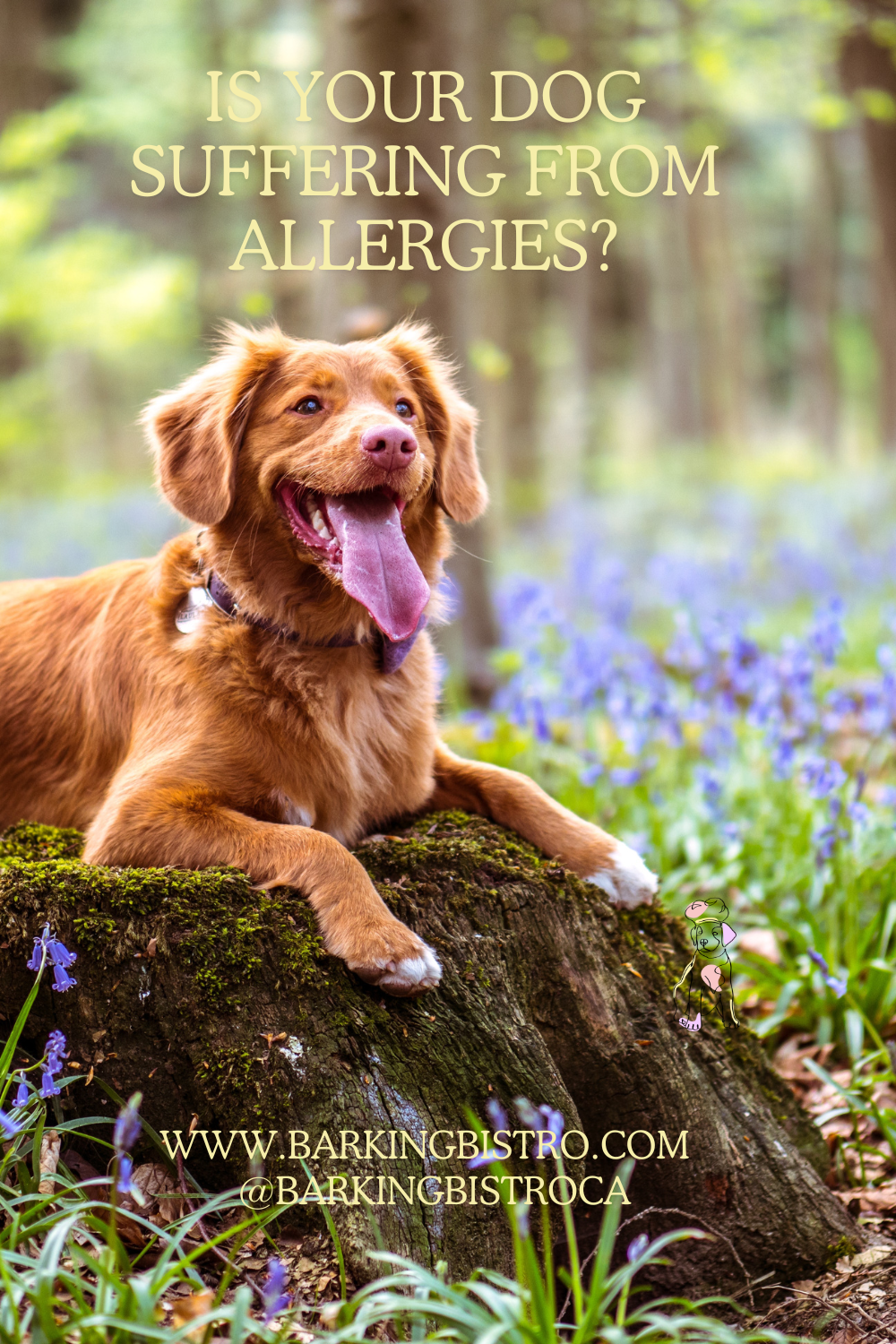As a dog owner, it’s essential to understand the signs and symptoms of allergies in dogs. Allergies can cause discomfort and even serious health problems for your furry friend. In this article, I’ll discuss the different types of allergies in dogs, the common symptoms to look out for, the causes of allergies, how to diagnose and test for them, and the different treatment options available. Finally, we’ll explore natural remedies for dog allergies, ways to prevent them, and when to see a veterinarian.

Introduction to Dog Allergies
Like humans, dogs can develop allergies too. Allergies occur when a dog’s immune system overreacts to foreign substances such as pollen, dust, mould, or certain types of food. These allergens trigger an immune response, causing symptoms such as itchiness, inflammation, and irritation. Allergies in dogs can be chronic, seasonal, or occur sporadically throughout their lives.
Types of Allergies in Dogs
There are three main types of allergies in dogs: food allergies, environmental allergies, and flea allergies. Food allergies occur when a dog’s immune system reacts to specific ingredients in their diet. Environmental allergies are caused by allergens such as pollen, mould, and dust. Flea allergies occur when a dog has an allergic reaction to flea saliva. It’s important to note that dogs can have multiple allergies simultaneously.
Common Symptoms of Dog Allergies
The signs of allergies in dogs can vary depending on the type of allergy. However, common symptoms of allergies in dogs include excessive scratching, licking, and biting of the skin. Other symptoms include red or inflamed skin, ear infections, hot spots, hair loss, and respiratory issues such as coughing and sneezing.
Causes of Dog Allergies
The exact cause of allergies in dogs is unknown, but it’s believed to be a combination of genetic and environmental factors. Certain breeds are more prone to allergies than others. Environmental factors such as pollution and climate change can also contribute to the development of allergies in dogs. Additionally, over-vaccination and overuse of antibiotics can compromise a dog’s immune system, making them more susceptible to allergies.
Diagnosis and Testing for Dog Allergies
Diagnosing allergies in dogs can be challenging. Your veterinarian will begin by conducting a physical examination and taking a detailed medical history. They may also recommend allergy testing, including skin or blood tests. Skin tests involve injecting small amounts of allergens into the skin and monitoring for reactions. Blood tests measure the levels of antibodies in the bloodstream in response to specific allergens.
Treatment Options for Dog Allergies
Once your veterinarian has diagnosed your dog’s allergies, they’ll recommend a treatment plan. Treatment options for dog allergies include medication, allergy shots, and dietary changes. Antihistamines and steroids can help alleviate symptoms such as itching and inflammation. Allergy shots (immunotherapy) involve injecting small amounts of allergens into your dog’s body to desensitize them to the allergen over time. Dietary changes can help manage food allergies in dogs.
Natural Remedies for Dog Allergies
Several natural remedies can help alleviate symptoms of allergies in dogs. These include adding omega-3 fatty acids to your dog’s diet, using coconut oil to soothe itchy skin, and giving your dog regular baths with hypoallergenic shampoo. Additionally, keeping your dog’s environment clean and free of allergens can help prevent allergic reactions.
Preventing Dog Allergies
Preventing dog allergies can be challenging, but there are steps you can take to reduce your dog’s risk. Regular grooming, including brushing and bathing, can help prevent allergies. Keeping your home clean and free of dust and allergens can also help. Additionally, avoiding over-vaccination and overuse of antibiotics can help maintain your dog’s immune system.
When to See a Veterinarian
If you notice any signs of allergies in your dog, it’s important to see your veterinarian. Your veterinarian can help diagnose and treat your dog’s allergies and provide advice on how to manage their symptoms. If your dog is experiencing severe symptoms such as difficulty breathing or anaphylactic shock, seek emergency veterinary care immediately.
Conclusion
Allergies in dogs can be uncomfortable and even serious. As a dog owner, it’s important to understand the different types of allergies, their symptoms, and how to prevent and treat them. If you suspect your dog has allergies, see your veterinarian for a proper diagnosis and treatment plan. With proper care and management, your dog can live a happy and healthy life without allergies.
Photo by Jamie Street on Unsplash

